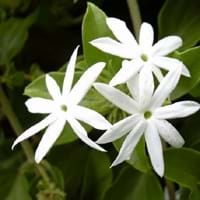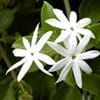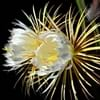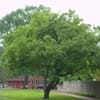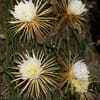Life Span
Perennial
Perennial
Type
Flowering Plants, Shrubs, Vines
Flowering Plants
Origin
Southern Africa
Mediterranean, North Africa, Northern America
Types
Arabian jasmine, Sambac jasmine, Gold Coast jasmine
Anthony Peak Lupine, Silver Bush, Garden Lupine, Spider Lupine, Adonis Lupine
Habitat
Forest edges, Hillside, Woods
Pine barrens, Sandy areas
USDA Hardiness Zone
Not Available
3-7
Sunset Zone
8, 9, 13, 14, 15, 16, 17, 18, 19, 20, 21, 22, 23, 24
1a, 1b, 2a, 2b, 3a, 3b, 4, 5, 6, 7, 14, 15, 16, 17
Habit
Upright/Erect
Upright/Erect
Flower Color
Pale White, White
Blue, Pink, White
Flower Color Modifier
Not Available
Not Available
Fruit Color
Black, Brown
Not Available
Leaf Color in Spring
Gray Green
Light Green
Leaf Color in Summer
Gray Green
Green
Leaf Color in Fall
Gray Green
Green
Leaf Color in Winter
Gray Green
Not Available
Leaf Shape
Oblovate
Oblovate
Plant Season
Spring, Summer, Fall, Winter
Summer
Sunlight
Full Sun, Partial Sun
Full Sun, Part sun
Type of Soil
Loam, Sand
Loose, Moist
The pH of Soil
Acidic, Neutral, Alkaline
Slightly Acidic
Soil Drainage
Well drained
Well drained
Bloom Time
Early Spring, Spring, Late Winter
Late Spring, Summer
Tolerances
Drought
Not Available
Where to Plant?
Container
Ground
How to Plant?
Seedlings, Stem Planting
Seedlings
Plant Maintenance
Medium
Medium
Watering Requirements
Do Not over Water, Requires regular watering
Form a Soil ring to water efficiently, Keep the ground moist but not water-logged, Requires a lot of watering, Water in morning to avoid prompting diseases
In Summer
Lots of watering
Lots of watering
In Spring
Moderate
Moderate
In Winter
Average Water
Average Water
Soil pH
Acidic, Neutral, Alkaline
Slightly Acidic
Soil Type
Loam, Sand
Loose, Moist
Soil Drainage Capacity
Well drained
Well drained
Sun Exposure
Full Sun, Partial Sun
Full Sun, Part sun
Pruning
Proper mowing practices are necessary, Prune after flowering
Prune ocassionally
Fertilizers
Compost, Fertilize the soil before planting, General garden fertilizer
All-Purpose Liquid Fertilizer
Pests and Diseases
Caterpillars, Leaf curl, Mildew
Aphids, Fusarium wilt, Root rot, Thripes
Plant Tolerance
Humidity, Salt and Soil Compaction, Shade areas
Drought
Flower Petal Number
Single
Single
Foliage Texture
Bold
Medium
Foliage Sheen
Matte
Matte
Attracts
Butterflies, Hummingbirds
Bees
Allergy
Chest tightness, Nausea, Vomiting
Abdominal pain, Asthma, Nausea, Swelling in the face, Vomiting
Aesthetic Uses
Hanging Basket, small hedge
Showy Purposes
Beauty Benefits
Good for the Scalp, Makes teeth white, Provides herbal hair care, Skin cleanser
Not Available
Environmental Uses
Air purification, Indoor Air Purification, Insect Repellent
Air purification
Medicinal Uses
Fever, Kidney problems, Urinary tract problems
Anthelmintic, Diuretic, Treatment of ulcers
Part of Plant Used
Flowers, Root
Flowers, Seeds
Other Uses
Basketary, Cosmetics, Oil is used for aromatherapy, Oil is used in mosquito repellents, Oil is used in perfume, soaps, creams, etc., Used for fragrance
Showy Purposes, Used as Ornamental plant, Used for fragrance
Used As Indoor Plant
Yes
No
Used As Outdoor Plant
Yes
Yes
Garden Design
Container, Feature Plant, Foundation, Hedges, Mixed Border, Rock Garden, Wall, Tropical
Bedding Plant, Container, Feature Plant, Foundation, Rock Garden
Botanical Name
ALOE arborescens
Lupinus
Common Name
Hydrangea or hortensia
Hybrid Lupine
In Hindi
चमेली
वृक संयंत्र
In French
Jasmin
usine de lupin
In Spanish
Hortensia
planta de lupino
In Greek
υδραγεία
φυτό λούπινο
In Portuguese
Jasmin
tremoço planta
In Polish
Jasmin
łubin roślin
In Latin
Jasmin
Plinio herba
Phylum
Magnoliophyta
Magnoliophyta
Class
Magnoliopsida
Magnoliopsida
Order
Scrophulariales
Fabales
Clade
Angiosperms, Asterids
Not Available
Tribe
Jasmineae
Not Available
Subfamily
Not Available
Faboideae
Importance of Jasmine and Lupine
Want to have the most appropriate plant for your garden? You might want to know the importance of Jasmine and Lupine. Basically, these two plants vary in many aspects. Compare Jasmine and Lupine as they differ in many characteristics such as their life, care, benefits, facts, etc. Every gardener must at least have the slightest clue about the plants he wants to plant in his garden. Compare their benefits, which differ in many ways like facts and uses. The medicinal use of Jasmine is Fever, Kidney problems and Urinary tract problems whereas of Lupine is Anthelmintic, Diuretic and Treatment of ulcers. Jasmine has beauty benefits as follows: Good for the Scalp, Makes teeth white, Provides herbal hair care and Skin cleanser while Lupine has beauty benefits as follows: Good for the Scalp, Makes teeth white, Provides herbal hair care and Skin cleanser.
Compare Facts of Jasmine vs Lupine
How to choose the best garden plant for your garden depending upon its facts? Here garden plant comparison will help you to solve this query. Compare the facts of Jasmine vs Lupine and know which one to choose. As garden plants have benefits and other uses, allergy is also a major drawback of plants for some people. Allergic reactions of Jasmine are Chest tightness, Nausea and Vomiting whereas of Lupine have Abdominal pain, Asthma, Nausea, Swelling in the face and Vomiting respectively. Having a fruit bearing plant in your garden can be a plus point of your garden. Jasmine has no showy fruits and Lupine has no showy fruits. Also Jasmine is not flowering and Lupine is flowering. You can compare Jasmine and Lupine facts and facts of other plants too.
